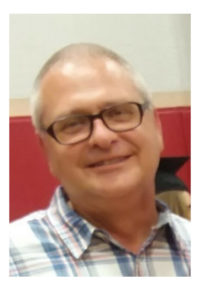Inventionland’s Teacher of The Month: August 2018
Our featured teacher for August 2018 is Jim Brucker of Fort Cherry. An experienced facilitator of project-based learning, Social Studies and Language Arts, Jim has used his experience to help his Innovation Course students reach once unattainable innovative heights in the classroom. We’ve had the opportunity to interview Mr. Brucker to discuss the importance of multi-disciplinary learning, the innovation processes, and how he’s explored and expanded on STEAM education.
- As a Social Studies and Language Arts teacher do you think you approach the Inventionland® Education curriculum from a different angle than a tech teacher might?
When I look at the Inventionland® Education curriculum, I first try to view it from a Language Arts and Social Studies lens. I strive to incorporate historical background as much as possible. I think this helps students to “authenticate” their ideas by understanding what has been created/invented before them. The communication – both written and verbal – component of the Inventionland®curriculum is a natural for the English requirements.
- It seems like you have been using project-based learning -in the classroom for a while, what was your first large-scale, hands-on project with students?
Our first large-scale project-based learning project was an Installation Hallway Project based on the culture of Japan. In this project, we transformed our 6th-grade hallway with student displays, mostly three-dimensional, to represent specific characteristics of Japan history. This involved student research of the time period plus the development of a display that would creatively illustrate the topic. Students also read the novel Sadako and the Thousand Paper Cranes which inspired the development of an 8 foot high yellow origami paper crane, precisely folded in our gym with the guidance of our art teacher. The crane was displayed in our main hallway and it was a display that showed me the pride and satisfaction that students felt from a completed project.
- In your experience, what benefits have you noticed from hands-on, projected-based learning?
One of the toughest challenges for teachers is to get students excited about learning. Hands-on, project-based learning is a great way to overcome this hurdle. Students become immersed in the project and striving to get it to its final presentation. As a teacher, I love the process that the students, almost without knowing, are part of during the project. There is research, fact-checking, collaboration, problem-solving, written and verbal communication, presentation elements and so much more.
I also like that students who might have difficulty with some more “traditional” assignments really excel in project-based environments. The skills of each student within groups are really highlighted.
- What is your favorite part of the Inventionland® Education curriculum to teach to your students?
I really like these two parts of the curriculum: problem solving and collaboration. As groups get into their designs and models, there is a tremendous amount of problem-solving that must happen as they work towards a finished product. Students will draw and plan their ideas, draw and cut their cardboard, glue and fasten pieces, and then find out that something didn’t work. This is when an amazing thing happens – they get together, figure out what went wrong, develop a solution, and then try again. In traditional writing assignments it is often difficult for me to have students write a rough draft, review and revise, and then make changes. In the Invention projects, group members are often eager to be the one to find the solution and suggest it to the group. The collaboration and communication they develop over the course of the design process is a great element of the project. I really make it a point to not intervene when groups hit the inevitable wall of “they’re not using my idea” or “they won’t listen to me.” They have to reset, work out their issues, and move on if they will be successful.
- What do you hope to see from your students next year?
I’m really anxious to see the creativity from our students as they become involved in the Inventionland®projects. I think more than ever in our society the “unthinkable” has become now “attainable.” (driverless cars, drones, . . . ). This is the age in which our students have grown up in and they are not in the mindset of “that can’t be done.” Instead, I hope to hear the discussions of “how can we do that” or “what if we had this.” Our school district has done a tremendous job of providing materials and opportunities for our students in regards to makerspaces so I am anxious to see how their ideas transform. Finally, my hope is to continue to have projects that cross over multi-disciplines. Past projects could not have been successfully completed without collaboration from our art, tech ed, STEAM, math, science, and reading teachers and we hope to continue this for the upcoming year.
- Tell us a little bit about you! Where did you go to school? Why did you want to become an educator?
I attended Indiana University of Pennsylvania and earned a major in English and a minor in History. My first career was with the JCPenney Company as a merchandise manager. I spent fourteen years with the company, but as our family grew ( I have four sons and a daughter), I felt a yearning to make the switch and enter the teaching field. After attending the University of Pittsburgh Masters program, I found my teaching position in 1998 at Fort Cherry School District. I began teaching Math, but as my positions evolved, I am now teaching English and History which I thoroughly enjoy. Although I liked my years in retail, I believe teaching has always been my calling. There’s nothing like seeing kids become excited about their learning.
